Cleaning Up Pristine Beaches Means Spotting Plastic Trash From Space
(Bloomberg) -- Plastics are ubiquitous in natural systems, and tiny pieces of the material have been found everywhere from the Arctic to the Mariana Trench. To test a theory that satellites could help detect the waste on beaches, Jenna Guffogg hauled discarded scraps from a clam-shell child’s pool, bubble wrap, single-use PET bottles and a blue polyester tarp to her local seashore in Australia.
The data scientist laid out weathered fragments in fourteen rectangles each covering about 2.25-square-meters (24-square-feet). Within a couple of hours, Maxar Technologies Inc.’s WorldView-3 satellite flew nearly 620 kilometers (385 miles) overhead and snapped a picture. Within a week, she got data and a few months later, she had an answer: the trash can be spotted from space.
Guffog’s findings, published in a study in , show how the use of satellites to locate plastic waste on beaches could aid efforts to curb the estimated 19 to 23 million metric tons of the material that enters marine and coastal ecosystems each year. That total is currently projected to about double by 2030.
The rising volume of the waste is an increasingly urgent issue for world leaders: Diplomats will descend on South Korea in a few weeks for the final round of United Nations talks on a legally binding plastic pollution treaty. Negotiations are likely to pit oil, gas and petrochemical producers like China, Saudi Arabia and Russia against a group including European Union members, Canada, Mexico and Australia. The former want to see a treaty that only tracks plastic waste, while the latter want one that tackles production.
Regardless of the outcome of those talks, Guffogg and other scientists are building frameworks that can help prioritize cleanups of existing waste that threaten marine, animal and human life. While her study analyzed just one beach area near Shallow Inlet, about 100 miles southeast of Melbourne, Guffogg wants to expand her research to see how the approach could work globally.
“The best case scenario would be we use technology like this to start developing maps that can show us where these plastic hot spots are,” said Guffogg. “Then you can direct cleanup efforts, be that by governments or other groups.”

Her analysis is the latest in a series of innovations catalyzed by remote-sensing technologies like multispectral satellites, drones and land-based sensors. Those tools are allowing scientists to quickly identify and track climate and environmental flashpoints from methane leaks to wildfires. The approach is also helping governments to shape their policy responses.
Satellite observations of methane are enabling authorities to hold fossil fuel operators accountable for the emissions, and the data has helped instigate a series of pledges to take action by nations and companies. Still, methane pollution from oil, coal and gas remains near record levels.
A small but growing community of scientists like Guffogg, a sessional lecturer at RMIT University in Melbourne, are applying many of the same principles to track plastics.
The Coastal Marine Litter Observatory, a spin-off company from the University of the Aegean, in Greece, has developed a platform which uses an algorithm to process high-resolution drone images of beaches and detect evidence of plastics. The results are uploaded to a database that’s been used by governments and non profits, like the Athanasios C. Laskaridis Charitable Foundation, for targeted cleanups.
Guffogg’s homemade targets were larger than much of the debris that washes ashore. So while satellites won’t be able to spot most small individual pieces of plastic, the technique should help in discovering accumulations of the waste. “As long as there's enough plastics gathered in an area we can spot them,” she said.
©2024 Bloomberg L.P.
KEEPING THE ENERGY INDUSTRY CONNECTED
Subscribe to our newsletter and get the best of Energy Connects directly to your inbox each week.
By subscribing, you agree to the processing of your personal data by dmg events as described in the Privacy Policy.
More gas & LNG news

ADNOC successfully completes $2.84 billion marketed offering of ADNOC Gas shares
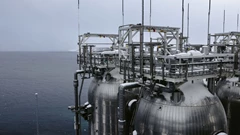
Scientists Say EU Carbon Market Should Include Removals Like CCS

Trump Will Allow for More Gas Pipe Expansion, Southern CEO Says

EU Trade Chief Says Ready to Work With US on Lower Tariffs
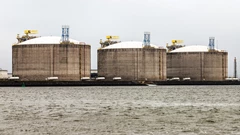
EU to Look at More ‘Flexible’ Filling of Gas Storage Post-2025
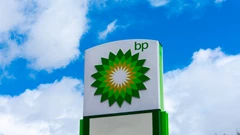
bp begins production from Raven Phase 2, offshore Egypt
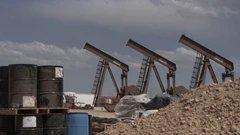
Diamondback Nears Permian Deal to Buy Shale Producer Double Eagle
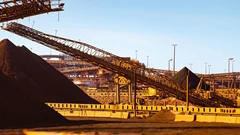
Australia’s Iron Ore Hub Reopens, Rio Mines Resume After Cyclone

Australia’s Iron Ore Export Hub to Reopen After Cyclone Weakens
















